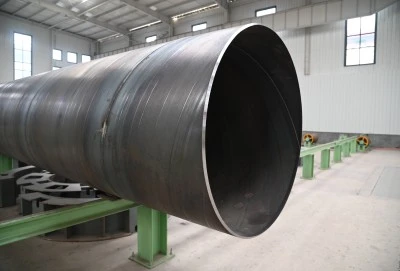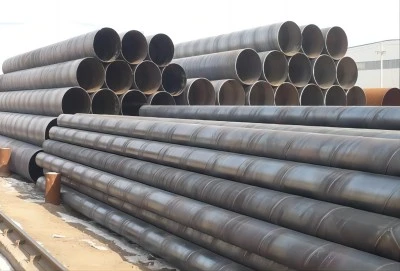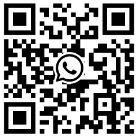Appearance Inspection:
Appearance inspection is a straightforward yet essential method for evaluating the quality of SSAW (Spiral Submerged Arc Welded) steel pipes. This method primarily involves identifying surface defects and dimensional deviations. High-quality SSAW welded steel pipe exhibits a uniform composition, with clean and neat internal threads at the cutting head. These characteristics are crucial for ensuring the pipe's integrity and performance in various applications.
Inferior SSAW steel pipes, on the other hand, may have uneven internal threads, lack metallic luster, and display burrs due to the use of substandard raw materials. These defects can significantly impact the pipe's structural integrity and suitability for demanding environments. By conducting a thorough appearance inspection, engineers and quality control personnel can detect these imperfections early in the manufacturing process, preventing potential failures and ensuring compliance with industry standards.
During the appearance inspection, inspectors look for signs of surface defects such as cracks, dents, and corrosion. These defects can compromise the pipe's ability to withstand pressure and environmental conditions. Additionally, inspectors measure the pipe's dimensions to ensure they meet the specified tolerances. Dimensional deviations can affect the pipe's fit and performance in the pipeline system, leading to potential leaks and failures.
In conclusion, appearance inspection is a vital step in the quality control process for SSAW steel pipes. By identifying surface defects and dimensional deviations, manufacturers can ensure that their products meet the required standards and provide reliable performance in various applications.
|
|
|
Sound Test:
The sound test is another simple yet effective method for inspecting SSAW welded steel pipe. This test involves knocking on the steel pipe and listening to the resulting sound. A crisp, clear sound typically indicates that the pipe is new and has not been recycled. In contrast, a dull or uneven sound may suggest the presence of defects or the use of recycled materials, which can affect the pipe's performance and reliability.
The sound test is particularly useful for detecting internal defects that may not be visible during the appearance inspection. For example, internal cracks or voids can cause a change in the sound produced when the pipe is struck. By carefully listening to the sound, inspectors can identify these hidden defects and take appropriate action to address them.
While the sound test is not a comprehensive inspection method, it provides a quick and easy way to assess the general condition of SSAW welded steel pipes. It is often used as a preliminary test before conducting more detailed inspections using advanced techniques.
In practice, the sound test is performed by tapping the pipe with a hammer or other suitable tool. Inspectors listen for any unusual sounds that may indicate the presence of defects. If any irregularities are detected, the pipe may be subjected to further testing to determine the extent and nature of the defects.
In summary, the sound test is a valuable tool in the inspection of SSAW welded steel pipes. Providing a quick and easy way to detect internal defects, helps ensure that the pipes meet the required quality standards and perform reliably in their intended applications.
Physical Method Inspection:
Physical method inspection involves using physical phenomena to test or detect internal defects in materials or workpieces. For SSAW welded steel pipe, non-destructive testing (NDT) methods such as ultrasonic testing, radiographic testing, penetration testing, and magnetic testing are commonly employed. These methods provide detailed information about the pipe's internal structure without causing any damage.
Ultrasonic Testing: Ultrasonic testing (UT) uses high-frequency sound waves to detect internal defects in the pipe. By transmitting sound waves into the material and analyzing the reflected signals, inspectors can identify flaws such as cracks, voids, and inclusions. UT is highly effective for detecting defects that are not visible on the surface, making it a crucial method for ensuring the integrity of SSAW welded steel pipes.
Radiographic Testing: Radiographic testing (RT) involves using X-rays or gamma rays to create images of the pipe's internal structure. These images, known as radiographs, reveal the presence of internal defects such as cracks, voids, and inclusions. RT is particularly useful for inspecting welds and identifying defects that may affect the pipe's performance. It provides a detailed view of the pipe's internal structure, allowing for an accurate assessment of its quality.
Penetration Testing: Penetration testing (PT) involves applying a liquid penetrant to the surface of the pipe to detect surface-breaking defects. The penetrant seeps into any cracks or voids, making them visible under ultraviolet light or other suitable inspection methods. PT is commonly used to detect surface defects such as cracks, porosity, and leaks in SSAW welded steel pipes. It is a simple and cost-effective method for identifying surface defects that may affect the pipe's performance.
Magnetic Testing: Magnetic testing (MT) uses magnetic fields to detect surface and near-surface defects in the pipe. By applying a magnetic field to the pipe and using magnetic particles to reveal defects, inspectors can identify cracks, inclusions, and other imperfections. MT is particularly effective for detecting defects in ferromagnetic materials such as steel. It is a reliable method for ensuring the quality and integrity of SSAW welded steel pipes.
Pressure Vessel Strength Inspection:
Pressure vessel strength inspection is a critical step in the quality control process for SSAW welded steel pipe. This type of inspection involves testing the strength and sealing of the pipes to ensure they can withstand the pressures and conditions they will encounter in service. Two common methods for pressure vessel strength inspection are hydraulic testing and air pressure testing.
Hydraulic Testing: Hydraulic testing involves filling the pipe with water and applying pressure to test its strength and sealing. The pressure is gradually increased to a specified level, and the pipe is inspected for any signs of leaks or deformation. This method is highly effective for detecting defects in the welds and ensuring the pipe can withstand the pressures it will encounter in service.
Air Pressure Testing: Air pressure testing involves filling the pipe with air and applying pressure to test its strength and sealing. This method is similar to hydraulic testing but uses air instead of water. Air pressure testing is particularly useful for detecting small leaks and defects that may not be visible during hydraulic testing. It provides a quick and effective way to assess the quality and reliability of SSAW welded steel pipe.
Both hydraulic and air pressure testing are essential for ensuring the quality and reliability of SSAW welded steel pipes. These tests provide valuable information about the pipe's strength and sealing, allowing manufacturers to identify and address any defects before the pipes are put into service.
SSAW Steel Pipe Factories:
The Longma Group employs advanced manufacturing techniques and state-of-the-art equipment to produce SSAW steel pipes. Their production facilities are equipped with automated systems that ensure precise control over the welding process, resulting in consistent and high-quality welds. Additionally, the company conducts rigorous testing on its products, including hydrostatic testing, ultrasonic testing, and radiographic inspection, to verify the integrity and performance of the pipes.
If you are in the process of selecting SSAW steel pipe manufacturers, the Longma Group offers a comprehensive range of products and services. Their team of experts is available to assist with product selection, customization, and technical support. For more information or inquiries, you can contact them at info@longma-group.com.














